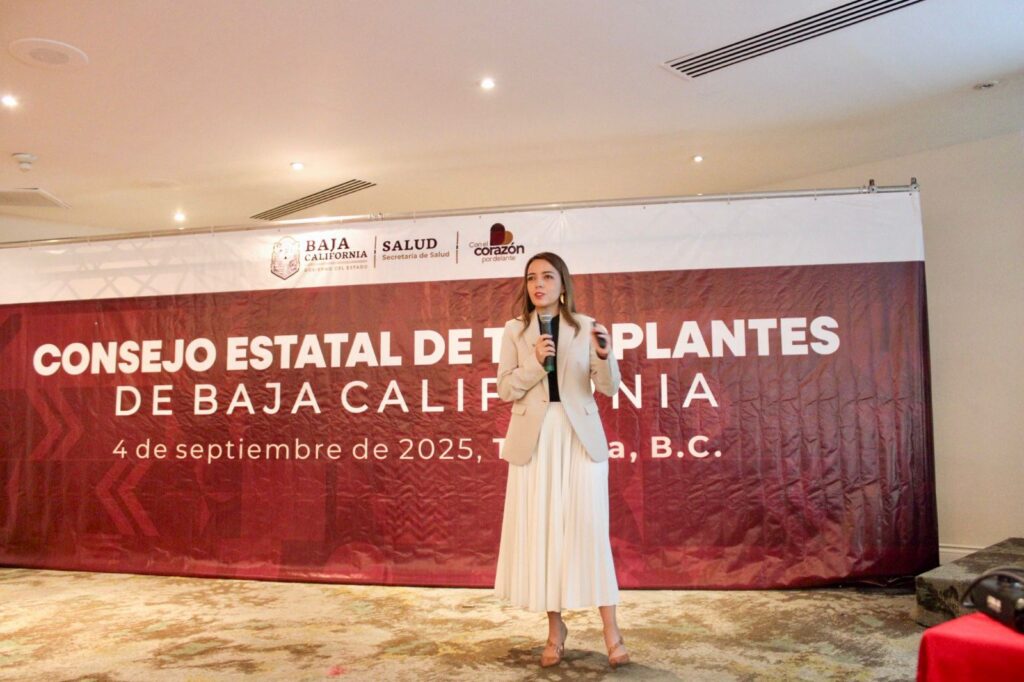Nobody likes waiting lists. Not at Costco, not at Starbucks, and definitely not when you need a kidney. That’s why Baja California’s State Transplant Council met under the slogan “For a Mexico Without a Waiting List.” The goal: to make organ donation as natural as tacos on a Tuesday.
Leaders Take the Stage
Rosa Erro Aboytia, director of Mexico’s National Transplant Center, led the event with steady conviction. She stressed the importance of cadaveric donations, better hospital access, and smarter transport systems. Imagine an organ flying across town while stuck in the same traffic as your Uber Eats. Not ideal.
She also called on med students to become champions of donation. These are the future doctors, surgeons, and health leaders. If they don’t talk about it now, who will spread the word later? Convincing college kids that organ donation matters may not sound glamorous, but saving lives usually isn’t.
A System That Actually Works
Néstor Saúl Hernández Milán, Baja’s Subsecretary of Health, explained that building a transplant culture requires everyone on deck. It’s not just about the person holding the scalpel. Lawyers, administrators, and logistics staff must also move fast when an organ becomes available. Otherwise, life-saving opportunities vanish.
He emphasized the need for more histocompatibility labs—fancy science rooms where doctors check if an organ and patient are a match. Without them, organs can’t be used in time. “We’re rolling out the ‘Código Vida’ system in hospitals,” Hernández said. That’s a rapid-response alert that activates every step of the process. When an organ shows up, the system blinks like Vegas. And this time, the jackpot is life.
Campaigns, Corneas, and College Leaders
Nelly Razo, technical secretary of the State Transplant Council, kept the optimism rolling. She highlighted fresh awareness campaigns, the long-awaited UABC cornea bank, and the training of university leaders to spread the gospel of donation. Getting students involved means a whole new generation ready to carry the message. Because organ donation shouldn’t be an awkward conversation—it should be part of everyday talk, like debating who makes the best fish tacos.
The cornea bank in particular is a big deal. With more donations, people suffering vision loss could receive transplants without having to wait years. For many, that means regaining independence. Imagine going from blurred shadows to seeing sunsets in Ensenada or the waves in Rosarito again. That’s the real payoff.
Everyone Was in the Room
The event wasn’t just another government meeting with coffee and pastries. Representatives came from UABC, the Red Cross, public and private hospitals, Certus Labs, the State Attorney’s Office, IMSS, ISSSTE, ISSSTECALI, and DIF. Even the Baja California Congress’ health commission made an appearance.
Civil associations also joined in, proving this isn’t a one-agency show. Basically, if you sneezed in Baja’s health system, someone in that room said “Salud.” That kind of collaboration is rare and worth bragging about.
Why It Matters
Here’s the reality: Mexico still struggles with transplant availability. While thousands are on the waiting list, donations are limited, and time is unforgiving. Every organ lost because of red tape means another family left waiting. Baja California’s push to speed things up could make a dent in those numbers.
And remember, organ donation isn’t only about kidneys and hearts. Corneas, skin, bone, and tissue all matter. They can improve lives in ways we often overlook.

Toward a Future Without Lists
The mission is ambitious: fewer delays, fewer wasted organs, and more patients given a second shot at life. Baja California is betting on better coordination, faster systems, and a culture where donation is the norm.
It’s a tall order, but hey—if we can keep our phones charged 24/7, surely we can keep hearts beating longer too.


